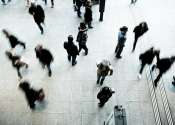Fermi satellite data puts new constraints on the possibility of antimatter stars
What if some of the antimatter that was thought to have disappeared was hiding in the form of anti-stars? Researchers from the Institute for Research in Astrophysics and Planetology (IRAP—CNRS/CNES/UT3 Paul Sabatier) are ...









